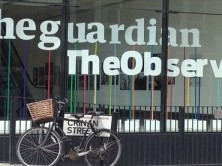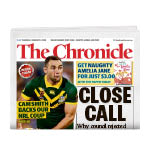Adam Reilly rounds up his top 30 media follies of the year.
As we look back on the year that was, it’s hard to single-out any particular media blunder as the worst. That’s not to say there weren’t plenty of candidates. The presidential election kept ethicists on their toes throughout 2008. The other major source of media mishaps? As Adam Reilly writes for ThePhoenix.com, it was “the ongoing immolation of the nation’s newspaper industry”.
Reilly says the biggest folly was a front-page New York Times article claiming presidential candidate John McCain had “problematic ties to lobbyists,” including an affair with lobbyist Vicki Iseman. “Their relationship, the Times explains, shows how McCain’s “confidence in his own integrity has sometimes seemed to blind him to potentially embarrassing conflicts of interest.” Hmm. Perhaps another, factual example would have worked better?”
The rest of Reilly’s top 5:
2. The Pittsburgh woman who claimed she was disfigured by a devoted Barack Obama supporter who didn’t like her McCain bumper sticker. Complete hoax, but The Drudge Report and Fox News fell hook, line and sinker.
3. It’s the Times again, with its error-riddled Charlton Heston obituary. More than 270 of the 2,500 words – that’s nearly 10 percent – had to be corrected. The corrections, including such details as his birth name and year of birth, were issued over the course of three days.
4. The “disproportionate” amount of time the press spent mourning the death of Meet The Press host Tim Russert. Reilly says the amount of time turned the mourning into a “case study in media solipsism.”
5. Conservative columnist Bob Novak referring to Russert as an “incredible source.” That’s right, source. Confused? Join the club.
Rounding out Reilly’s top 30 are staffing decisions at the Wall Street Journal, the business media’s lack of foresight into – and subsequent scramble to explain – the current economic crisis, prematurely published obituaries of very-much-alive Steve Jobs, NBC’s failure to present social or political news on China during the Olympic Games, and more.
Ironically, in a story about media mistakes, Reilly had to post a correction to the original version: “Editor’s Note: In a previously published version of this story, in the 2nd point, the author mistakenly identified Ashley Todd (the young woman with the “B” carved into her forehead) as a McCain campaign volunteer; Todd was actually a College Republican National Committee employee.”
Is it too much to ask that an article criticizing a year’s worth of mistakes not include any errors of its own?






